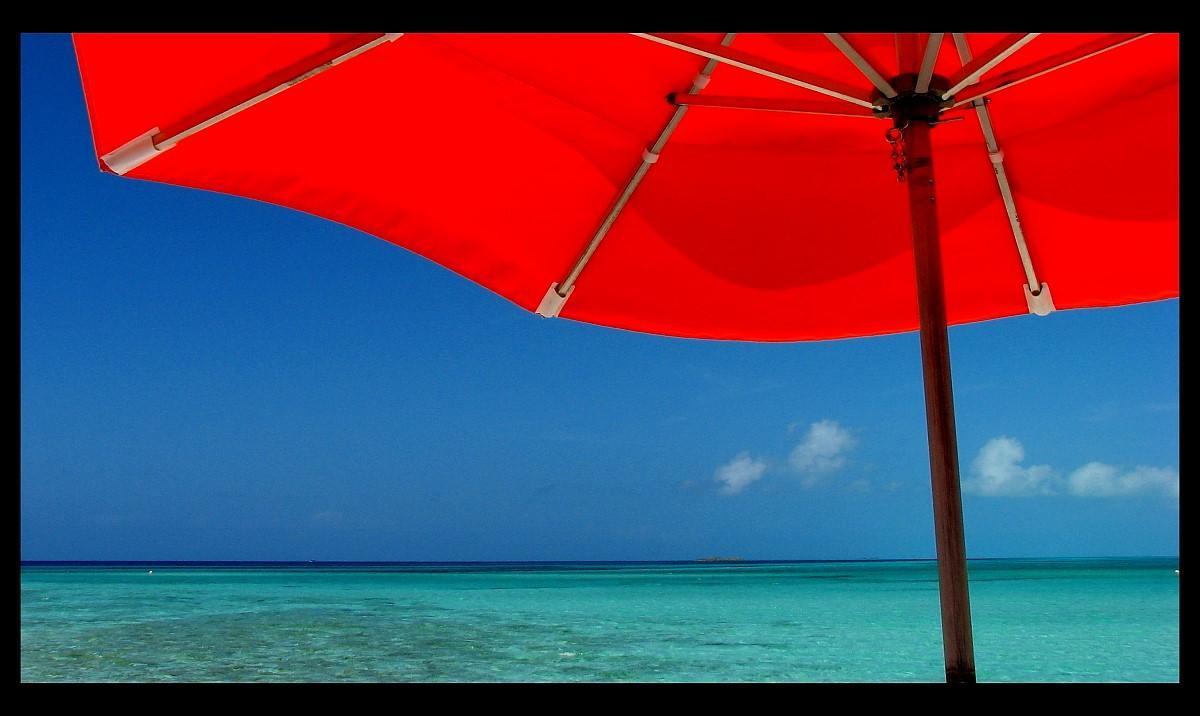17 Capítulo 2: Sección 5: El tiempo
Section Goal
In this section, students will learn how to describe weather conditions in Spanish.
Vocabulario
You may notice that descriptions of the weather in Spanish are often formed quite differently from those in English or other languages you may know. It’s important to learn the weather expressions as complete phrases—not just niebla (fog), but hay niebla (it’s foggy; there is fog). Below is a table of common weather phrases. You may be tired of memorizing, but as they say, “Al mal tiempo, buena cara” (To bad weather, turn a good face).
|
|
|
|
|
|
Está despejado
|
It’s clear |
Hace sol |
It’s sunny |
|
Está nublado |
It’s cloudy |
Hace calor |
It’s hot |
|
Está húmedo
|
It’s humid |
Hace buen tiempo |
The weather is nice |
|
Está soleado |
It’s sunny |
Hace mal tiempo |
The weather is bad |
|
Otras expresiones |
|
Hace fresco |
It’s cool |
|
Hay niebla |
It’s foggy |
Hace frío |
It’s cold |
|
Llueve |
It’s raining |
Hace viento |
It’s windy |
Actividad 16. El clima de tu ciudad
Instructions: Describe the weather in your town using weather expressions.
Modelo: ¿Qué tiempo hace en otoño? En otoño hace viento.
- ¿Qué tiempo hace hoy?
- ¿Qué tiempo hace en invierno?
- ¿Qué tiempo hace en primavera?
- ¿Qué tiempo hace en verano?
[2]
Actividad 17. El tiempo
Modelo: Cuando hace frío, usamos unos guantes (gloves).
- Cuando hace _________________, vamos a la playa (we go to the beach).
- Cuando hace _________________, nos ponemos (we put on) suéteres.
- Cuando hace _________________, volamos una cometa (we fly a kite).
- Cuando hay _________________, no veo (I don’t see) nada.
- Cuando _________________, mi perro tiene miedo (my dog is afraid).
- Cuando _________________, podemos (we can) esquiar.
- Cuando está _________________, bebo mucha agua.
- Cuando _________________, el suelo está mojado (the ground is wet).

Actividad 18. ¿Qué tiempo hace?
Instructions: Write the weather expression that corresponds to each picture.
Summer day at the beach under a red umbrella:
-

“Under the Umbrella at Serenity Bay” by Scott Smith is licensed under CC BY-NC-ND 2.0. - Rainy day:

Little boy drinking hot coco outside on a winter day:

- Cloudy day:
-

“Clouds” by Peggy und Marco Lachmann-Anke is under a Pixabay license - Actividad 19. Una conversación
Instructions: Read the conversation between Gael and Antonio. Then answer the questions in English.
- Gael: ¡Hola, Antonio! ¿Qué tal?
- Antonio: Muy bien. Mi mujer y yo vamos a dar un paseo esta tarde. Nos gusta caminar cuando hace muy buen tiempo. Y a ella le gusta ver personas caminando con sus perros.
- Gael: A mí también pero hace mal tiempo por aquí.
- Antonio: Qué pena. Por aquí, hace sol y está despejado.
- Gael: ¡Anda! Hay niebla y está lloviendo. No me gusta estar en casa todo el día, pero qué puedo hacer.
- Antonio: Pues, tienes que venir a Granada con nosotros. Llevamos pantalones cortos con camisetas. Te gusta viajar y ver la Alhambra, ¿no?
- Gael: Sí, por supuesto me gusta viajar. Es una buena idea, porque aquí en San Sebastián llevamos suéteres y pantalones con chaquetas encima.
- Antonio: Tengo que irme. Vamos a caminar ahora pero avísame sobre tus planes.
- Gael: Vale. ¡Que lo paséis bien!
- Antonio: Gracias. Hasta luego.
- Gael: Adiós.
- Antonio says: “Vamos a dar un paseo esta tarde” (We’re taking a walk this afternoon). Why?
- Who is having nicer weather, Antonio or Gael?
- What clothing is Antonio wearing, and is it appropriate for his weather?
- What about Gael’s clothing?
- Granada and San Sebastián are in Spain. Judging by their weather, which do you think is in the north of Spain, and which is in the south?
- "¡Chévere! Introductory Spanish I: 4. ¿Tienes que estudiar hoy?: En contexto: Expresiones con tener" by Elizabeth Silvaggio-Adams & Ma. Del Rocío Vallejo-Alegre is licensed under CC BY 4.0 ↵
- "¡Chévere! Introductory Spanish I: Actividades 6.3: El clima: Qué tiempo hace en otras ciudades?" by Elizabeth Silvaggio-Adams & Ma. Del Rocío Vallejo-Alegre is licensed under CC BY 4.0 ↵
- "¡Chévere! Introductory Spanish I: En contexto: El clima" by Elizabeth Silvaggio-Adams & Ma. Del Rocío Vallejo-Alegre is licensed under CC BY 4.0. ↵

